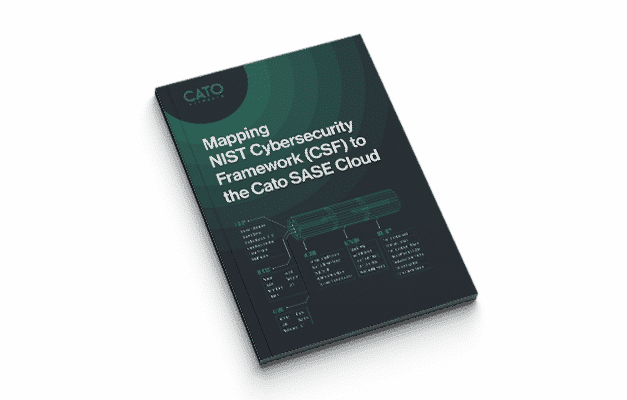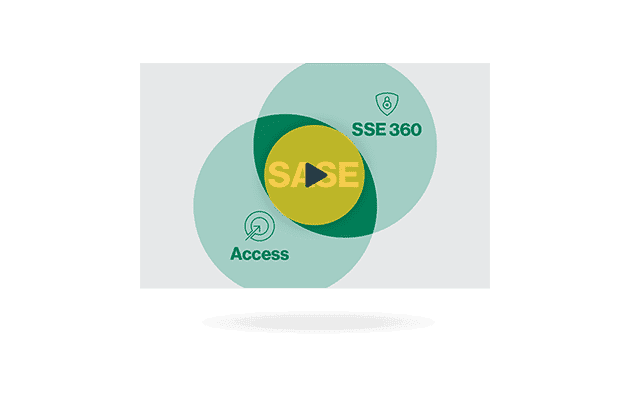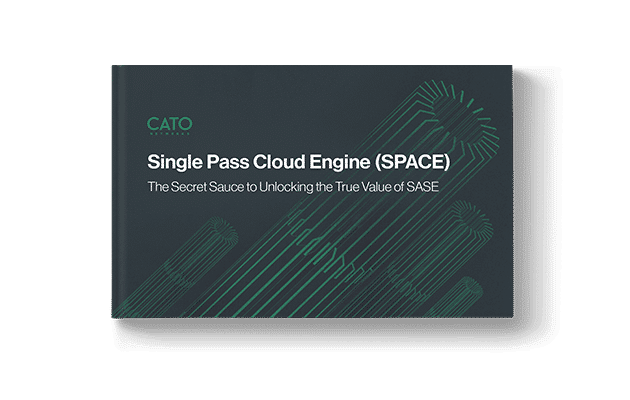What is SASE?
Secure Access Service Edge
Secure Access Service Edge, or SASE, is an enterprise networking and security category introduced by Gartner. SASE converges SD-WAN, a Cloud Network, and Security Service Edge (SSE) functions, including FWaaS, CASB, DLP, SWG, and ZTNA, into a unified, cloud-native service.
With SASE, enterprises can eliminate the effort and costs required to maintain complex and fragmented infrastructure made of point solutions, reduce the risk for breach and data loss with optimal security posture, enable secure work from anywhere, and improve access to global applications on premises and in the cloud.
The Key Components of SASE
Software-Defined WAN (SD-WAN)
Secure Web Gateway (SWG)
Firewall as a Service (FWaaS)
Zero-Trust Network Access (ZTNA)
Cloud Access Security Broker (CASB)
Global Cloud Network
Unified Management
SD-WAN enables optimal WAN management. SASE leverages SD-WAN capabilities to provide optimized network routing, global connectivity, WAN and Internet security, cloud acceleration, and remote access.
A firewall is the foundation of any network security stack. SASE includes FWaaS to provide the scalability and elasticity needed for the digital business and to extend a full network security stack wherever needed.
ZTNA offers a modern approach to securing application access for users. It embraces a zero-trust policy, where application access is dynamically adjusted based on user identity, location, device posture, and more. SASE continuously inspects all ZTNA sessions for risks and naturally extends to provide endpoint protection, detection and response.
CASB helps enterprises monitor the usage of SaaS applications, both sanctioned and unsanctioned (“Shadow IT”), and apply access policies based on user identity, application risk, and nature of the action and data being used.
The Cloud Network optimizes global routing, latency sensitive traffic such as voice and video, and cloud and on-premises application access for all sources and destinations.
SASE solves the complexity of managing multiple disparate products. A true SASE allows users to monitor and manage all network and security solutions from a single pane of glass.
Cato Networks is the World’s First SASE Platform
Cato SASE Cloud is a proven SASE platform you can deploy today. Cato’s cloud-native architecture converges SD-WAN, a global private backbone, a full network security stack, and seamless support for cloud resources and mobile devices. Customers easily connect physical locations, cloud resources, and mobile users to Cato SASE Cloud, and IT teams immediately benefit from the agility of a unified network and security service managed through a single, self-service console.
“There are not many times as a CIO that you can check the box in all these areas – faster, more secure, happy users, and a happy team – all for less cost and more business value. That’s the Cato SASE Cloud Platform.”
Dustin Collins,
Global CIO, Element Solutions Inc
Stay updated
A Single-vendor SASE Platform
Challenge
Point Solutions for Networking and Security are too Complex to Manage and Costly to Own
Current networking and security solutions such as VPN remote access are incompatible with the cloud-centric and mobile-first digital business. The network is rigid and static, and security is heavily fragmented across multiple domains. Together, networking and security are slowing down the business instead of enabling innovation and agility.
Solution
Cloud-native Convergence of Networking and Security enables Simplicity, Agility, and Lower Costs
Cato is delivering the world’s first SASE platform, (and has been recognized by Gartner as a “Sample Vendor” in the SASE category of the “Hype Cycle for Enterprise Networking, 2019”) through a globally distributed cloud service that provides enterprise network and security capabilities to all edges.
Comparing Legacy Solutions with
Cato SASE Cloud
Cato SASE Cloud
Legacy solutions
Service Agility
Quick and Easy
Slow and Cumbersome
Service Agility
Cato SASE Cloud
Quick and Easy
Cato enables IT teams to deliver optimized networking and powerful security to all sites, applications, and users regardless of location. Provisioning new resources is fast and simple with the full range of Cato’s optimization and security capabilities instantly available.
Legacy solutions
Slow and Cumbersome
IT teams have to configure multiple solutions through multiple consoles, struggling to maintain consistency and control of the infrastructure. Provisioning new resources is slow and dependent on complex multi-product integrations.
Visibility & Control
Teamwork, Regained
The Dreaded Silos
Visibility & Control
Cato SASE Cloud
Teamwork, Regained
IT teams leverage Cato’s converged software stack to maximize visibility into network traffic and security events. From the same interface, IT professionals configure and enforce corporate policies across the business. This enables better cross-team collaboration, improving overall service delivery to the business.
Legacy solutions
The Dreaded Silos
Technical silos created by point solutions limit collaboration across teams. Lack of visibility and fragmented control leads to slower troubleshooting, increased security exposure, and overall lower satisfaction levels from the business.
Infrastructure Management
Focus on the Business
Boatload of Busy Work
Infrastructure Management
Cato SASE Cloud
Focus on the Business
With Cato, IT teams are relieved of the grunt work of maintaining the infrastructure. Cato ensures the service is up-to-date and ready to optimize and secure all customer network traffic everywhere. This enables IT to focus precious resources and skills on business-specific requirements.
Legacy solutions
Boatload of Busy Work
Owning and managing multiple on-premise solutions for networking and security forces IT teams to spend a lot of time on generic, day-to-day management, scaling, sizing, and upgrading of products. This leaves them little to no time to get business-specific projects done.
Cost Effectiveness
Simplicity Costs Less
Complexity is Expensive
Cost Effectiveness
Cato SASE Cloud
Simplicity Costs Less
Cato dramatically simplifies the delivery of networking and security to the business. The capabilities you require are built in not bolted on and there is no need to size, scale, or maintain the Cato service. Cato’s converged, cloud-based platform and flexible management options enables significant cost reduction.
Legacy solutions
Complexity is Expensive
Buying, integrating and maintaining multiple products is costly. Each product has to be sized to support current needs and future growth and often requires upgrades as requirements change. As the number of point products grow, complexity increases exponentially. And, moving complexity to the service providers only increases their costs, leading enterprises paying more or suffering lower quality of service.

SASE value
for WAN Transformation
Digital transformation and the WAN transformation it mandates doesn’t happen overnight. It is often comprised of multiple projects involving SD-WAN, Internet security, cloud migration, mobile access, and more.
When considering your next incremental investment in your network (SD-WAN, a global connectivity solution, or a security solution), ask yourself if the right decision is choosing a point solution that addresses the current project needs, or a strategic SASE platform that can address both current and future projects requirements.
Replace MPLS /
Increase BW
Global
Connectivity
Secure
DIA
Optimize
Cloud Access
Optimize
Mobile Access
Really Simple
Management
SASE
Edge SD-WAN
Private Global Backbone
NGFW / UTM
SWGs
SASE: A single platform that can support your current and future IT projects
FAQ
What is SASE used for?
Secure access service edge (SASE) is used to deliver converged enterprise network and security services from a globally distributed cloud service. SASE overcomes the cost, complexity and rigidity of loosely integrated and geographically bound point solutions. When combined with a global private backbone, SASE can also address WAN and cloud connectivity challenges.
What is the difference between point solutions (SD-WAN, NGFW, SWG, VPN) and SASE?
Point solutions such as SD-WAN, NGFW, SWG, and VPN address specific networking and security requirements. The need to buy, size, scale, and maintain each solution separately, makes IT infrastructure complex and costly. SASE is a transformational alternative to those legacy technological silos. It provides as a globally distributed cloud service that replaces physical and virtual point solution with a cost effective, scalable and agile alternative.
What is the difference between SD-WAN and SASE?
SD-WAN is a key component of the SASE platform that connects branch locations and datacenters to the SASE cloud service. SASE extends SD-WAN to address the full WAN transformation journey that includes security, cloud, and mobility at a global scale.
Why is SASE important?
SASE is important because the convergence of network and security into a cloud-native service allows IT teams to connect and secure all business locations and users in an agile, cost-effective and scalable way.
Is SASE better than point solutions (SD-WAN, NGFW, SWG, VPN)?
As a result of the move to the cloud and an increasing mobile workforce, point solutions can only deliver the capabilities the business needs at a growing complexity and costs. SASE’s converged, cloud-native, and globally distributed architecture easily delvers the capabilities the business needs to all users and locations everywhere. SASE therefore overcomes the cost, complexity and high overhead of running numerous legacy point solutions.
Is SASE better than SD WAN?
SD-WAN is just the first step in the WAN transformation journey. It lacks key security functions, global connectivity capabilities, and support for cloud resources and mobile users. A full SASE platform can support the entire WAN transformation journey, as it enables IT to provide the network and security functions the business needs in an agile and cost-effective way.
How secure is SASE?
SASE is secured end-to-end. All communication across the SASE platform is encrypted. Threat prevention capabilities including decryption, firewalling, URL filtering, anti-malware, and IPS are natively integrated into SASE, and are globally available to all connected edges.
What is not a SASE?
SASE is a cloud service that is identity-driven, cloud-native, globally distributed, and supports all edges. Alternative architectures, such as service chaining appliances, hosting appliances and virtual machines, and telco bundles, are based on point solutions not a converged software stack designed for the cloud.














